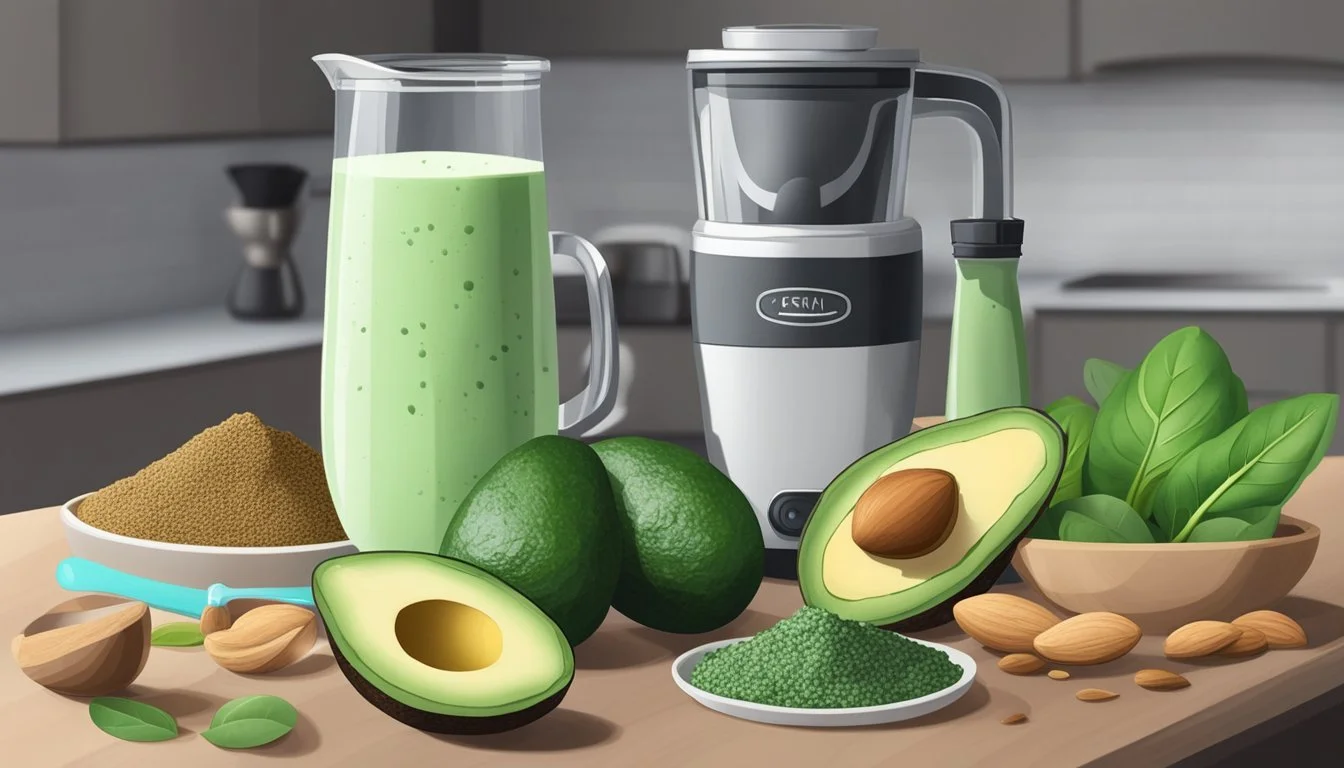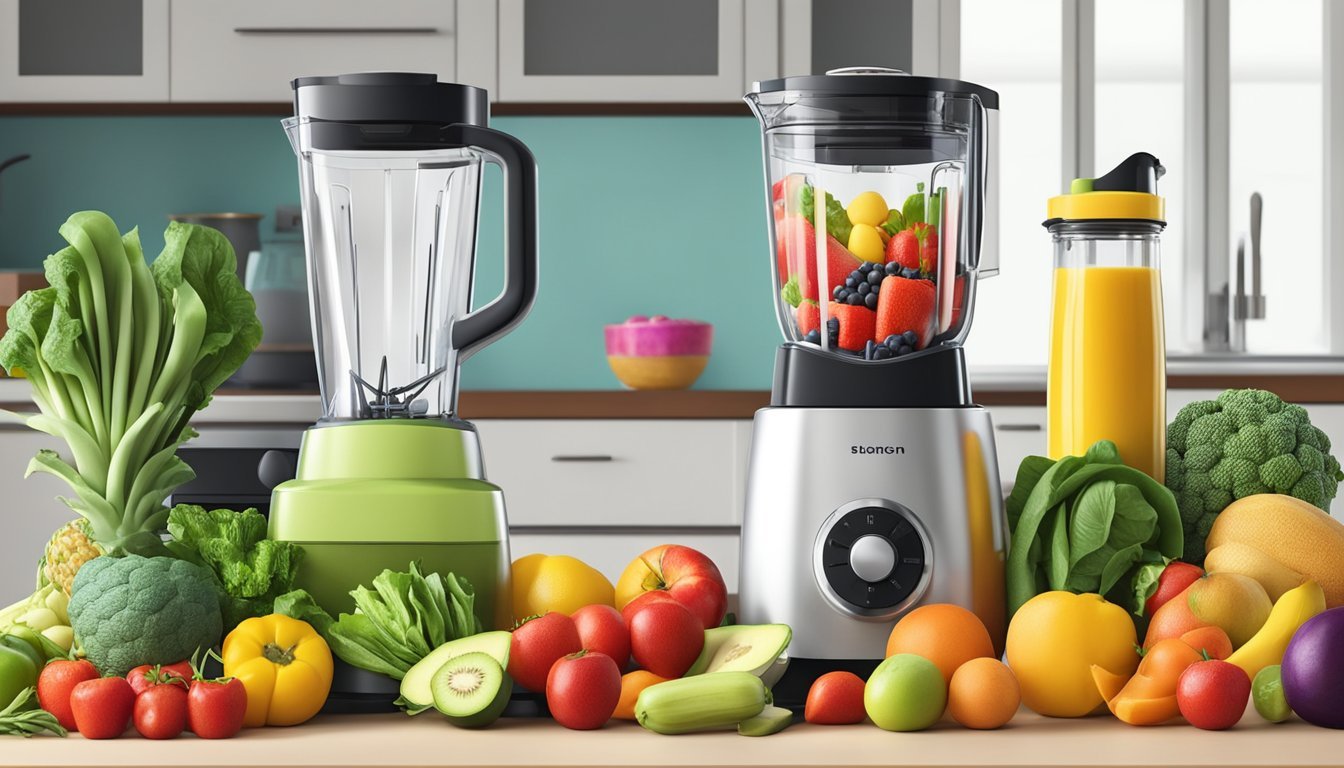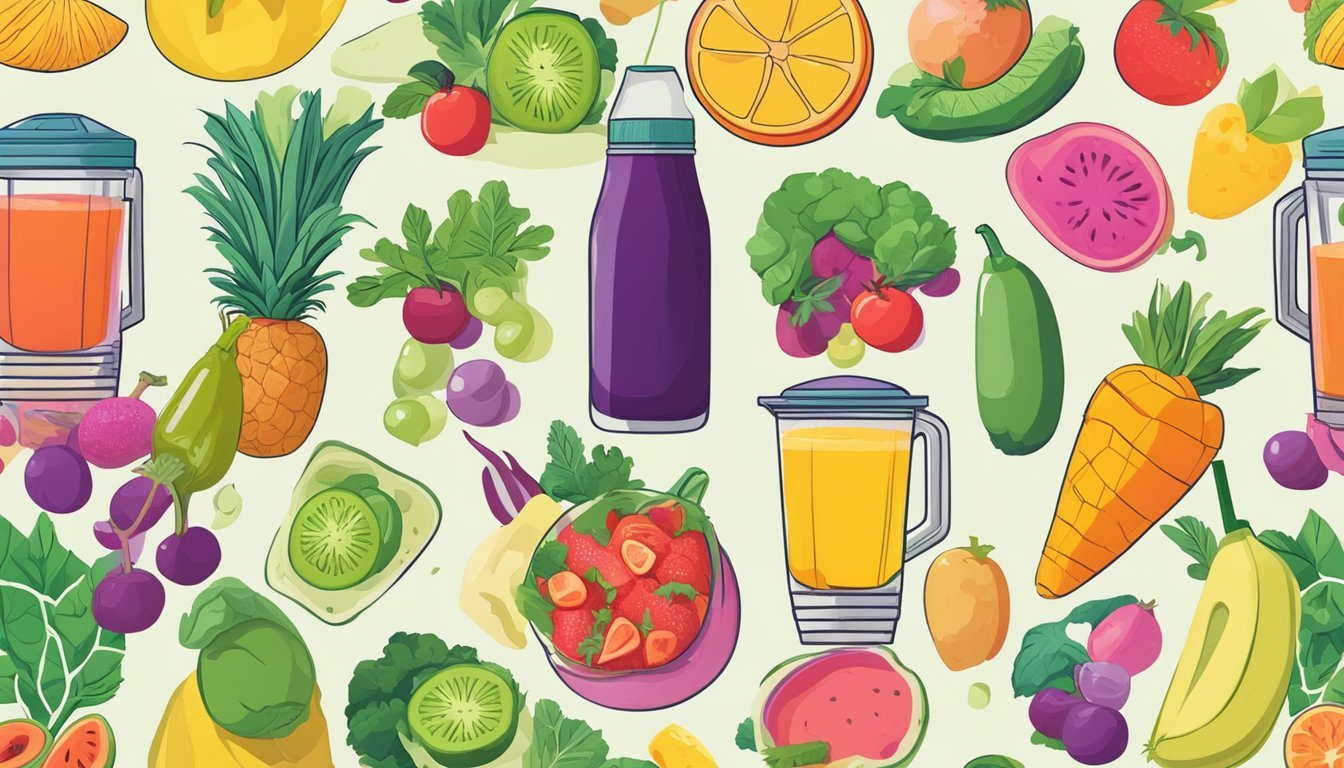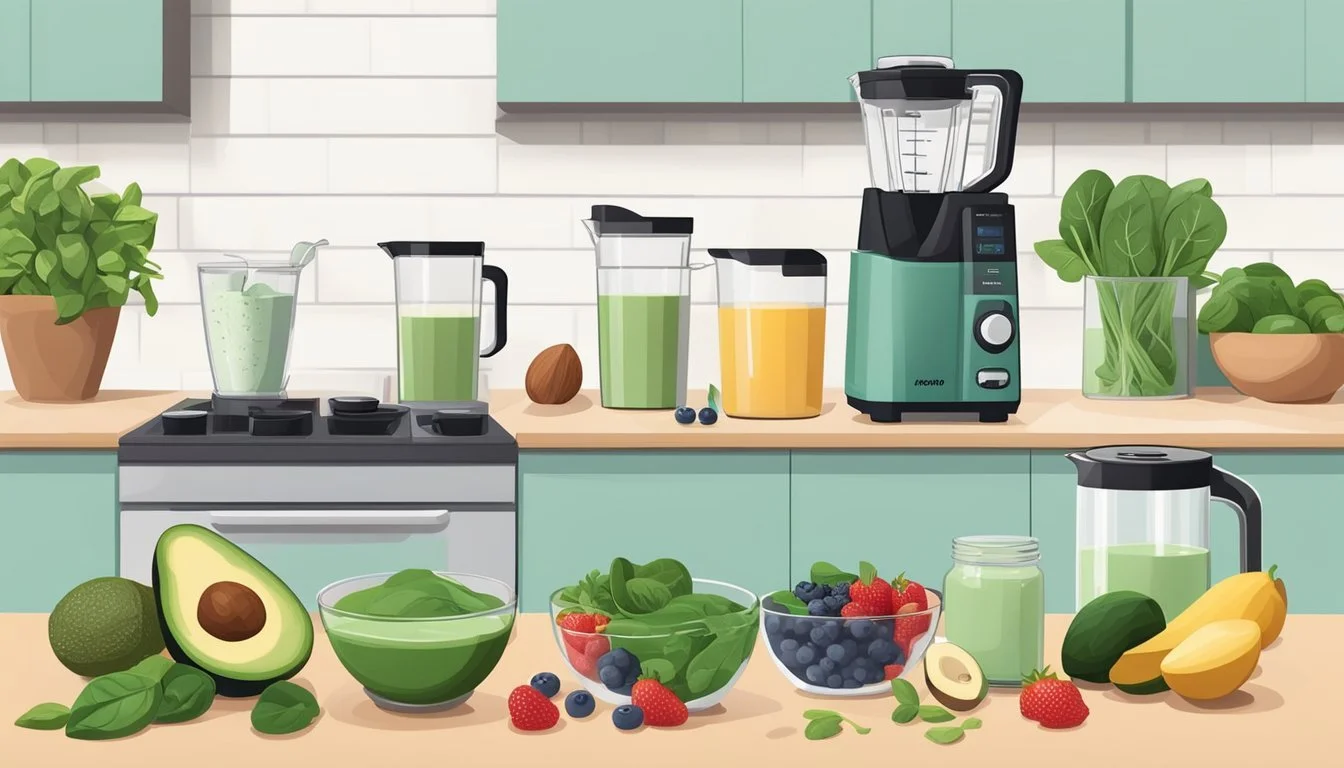Keto Diet Smoothie Ideas: 5 Delicious Low-Carb Recipes
The ketogenic, or keto, diet emphasizes high-fat, low-carbohydrate eating to encourage the body to enter a state of ketosis, where it burns fat for energy instead of glucose. Within the framework of this diet, smoothies can be a convenient and nutritious option for those looking to maintain this dietary pattern while ensuring a healthy lifestyle. The key is to craft recipes that align with the ketogenic ethos—integrating a balance of nutrients while keeping carbohydrate content low.
Crafting keto-friendly smoothies involves a careful selection of ingredients to maintain their health-promoting qualities without compromising the diet's constraints. Low-carb fruits like berries are often included for natural sweetness and essential vitamins, while healthy fats can be incorporated through additions like avocados (how long does avocado last?) and nut butters. Dairy or dairy substitutes, such as almond milk or coconut milk, are also common for their texture and nutritional profile, though it's important to choose unsweetened varieties to keep sugar content in check.
Smoothies offer a versatile and palatable approach for those following a keto diet to consume essential nutrients and maintain their health goals. By prioritizing ingredients that fit within the low-carb, high-fat parameters, individuals can enjoy a range of delicious and creative smoothies that support their dietary needs. Whether as a breakfast option, a post-workout refreshment, or a satiating snack, keto smoothies can play an integral role in a balanced and healthy diet.
The Basics of Keto Diet and Smoothies
The ketogenic, or keto, diet focuses on low carbohydrate intake to induce the body into a state of ketosis, where it burns fat for fuel. Smoothies can be a convenient option for those on a keto diet, offering a customizable blend of fat, calories, and carbs to align with their nutritional goals.
Understanding the Keto Diet
The keto diet is a high-fat, moderate-protein, and low-carbohydrate eating plan designed to transition the body into ketosis. In this metabolic state, the body uses ketones—produced from the breakdown of fats in the liver—as its primary energy source instead of glucose from carbohydrates. The exact nutrient breakdown of a typical keto diet is generally:
70-80% Fat
20-25% Protein
5-10% Carbohydrates
Individuals on the keto diet aim to limit their net carbs (total carbs minus fiber) to approximately 20-50 grams per day to maintain ketosis.
The Role of Smoothies in a Keto Diet
Smoothies can play a beneficial role in a keto diet when crafted carefully. They are particularly useful for those who need a quick, portable, and easy meal replacement. To create a keto smoothie, one must focus on low-carb ingredients while ensuring sufficient fat content to align with the keto macronutrient ratios. The typical components of a keto-friendly smoothie might include:
A base liquid such as unsweetened almond milk, coconut milk, or water
Healthy fats like avocado, MCT oil, or nut butters
Low-carb fruits like berries
Optional keto-friendly sweeteners
Calories from smoothies should be accounted for within the daily caloric intake to avoid excessive consumption, which may hinder weight management goals.
Choosing the Right Ingredients
Creating keto smoothies requires careful selection of ingredients to adhere to low-carb, high-fat nutritional profiles. The focus is on fruits that are low in carbohydrates, healthy liquid bases that replace traditional milk or juices, and add-ins rich in fats and proteins that fit within the ketogenic guidelines.
Best Fruits for Keto Smoothies
Fruits commonly found in ketogenic smoothie recipes often include berries and avocados due to their low carbohydrate content and high nutritional value.
Berries: Raspberries, blackberries, and strawberries can be included in moderation.
Avocado: Adds creaminess with healthy fats and is very low in net carbs.
Keto-Friendly Liquid Bases
The foundation of a good keto smoothie is a liquid base that is low in carbs but can provide a creamy texture.
Milk Alternatives: Unsweetened almond milk and coconut milk are popular choices.
Cream: Heavy cream or coconut cream can be used for extra richness.
Water: Always an option for a lighter smoothie.
Health-Boosting Add-ins
Reinforcing smoothies with nutritionally dense add-ins can enhance their health benefits without compromising the keto adherence.
Proteins: A scoop of low-carb protein powder or nut butters can increase the protein content.
Fats: Options like MCT oil and seeds (such as chia seeds) contribute healthy fats.
Greens: Spinach or kale can be added for a dose of vitamins and minerals.
Yogurt: Utilize full-fat Greek yogurt sparingly for a boost in texture and probiotics.
Crafting the Perfect Keto Smoothie
In crafting the perfect keto smoothie, one must diligently balance macronutrients while enhancing flavors and achieving a creamy texture without adding sugars. Ensuring low net carbs and using healthy fats are top priorities.
Optimizing Macronutrient Ratios
For individuals adhering to a ketogenic diet, it's essential to minimize carbohydrate intake and focus on healthy fats and moderate protein levels.
Fats: Should mainly come from sources like avocado, coconut cream, or MCT oil. These ingredients significantly increase the fat content, aligning with keto goals.
Protein: Adding protein powder or nut butters ensures the smoothie supports muscle maintenance and satiety without excess carbs.
Fiber: Incorporate high-fiber, low-carb vegetables such as spinach or kale to aid digestion and maintain net carbs within the keto-friendly range.
Enhancing Flavor Without Added Sugars
To avoid sugar and keep net carbs low, natural sweeteners and flavorings are key.
Sweeteners: Utilize low-carb sweeteners like stevia, erythritol, or monk fruit, which provide sweetness without the sugar spike.
Flavorings: For added flavor without carbs, ingredients such as unsweetened cocoa powder or vanilla extract offer rich and versatile taste profiles.
Creating Creamy Textures
Achieving a rich and creamy smoothie consistency can be done with the right selection of dairy or dairy alternatives.
Dairy: Options like heavy cream or cream cheese offer richness while keeping carb counts low.
Dairy alternatives: Unsweetened nut milks like almond or cashew milk and full-fat coconut milk serve as excellent bases that add creaminess without dairy.
Remember to add the liquid base first in the blender to prevent ingredients from sticking to the sides and to facilitate a smoother consistency.
Specialty Keto Smoothie Ideas
In this section, we explore a variety of keto-friendly smoothie recipes to energize your day, fuel your workouts, and satisfy your dessert cravings, all while adhering to the keto diet framework.
Breakfast Smoothies
Triple Berry Avocado: A classic choice, blending strawberries, blueberries, and raspberries for a low-carb kick-start. These berries offer a rich source of antioxidants while the avocado provides healthy fats and a creamy texture. Such a smoothie could be an excellent source of sustained energy throughout the morning.
Green Smoothie: A blend of spinach or kale with high-fat bases like coconut milk, coupled with a keto-friendly sweetener for taste, can create an invigorating green smoothie. Adding in a scoop of protein powder can turn this into a complete breakfast. Optionally, cinnamon can be sprinkled in for its anti-inflammatory properties and to enhance flavor.
Post-Workout Refreshers
Keto Peanut Butter Smoothie: Ideal for post-exercise recovery, this smoothie can combine peanut butter with almond milk and a keto-compatible protein powder. The healthy fats in peanut butter support muscle repair while the protein helps with muscle recovery.
Acai Almond Butter Smoothie: Post-workout, a keto practitioner might enjoy the antioxidants of an acai berry smoothie with almond butter for additional protein and fats, facilitating recovery and replenishment.
Dessert-Inspired Creations
Strawberry Avocado: Mimicking a strawberry milkshake, a strawberry avocado smoothie blends the sweetness of strawberries with the richness of avocado. Adding a touch of vanilla extract can enhance the dessert-like quality without added sugar.
Blueberry Cinnamon Smoothie: For a dessert that incorporated the warm spice of cinnamon, a blueberry cinnamon smoothie can serve as a delightful treat. The natural sweetness of the blueberries diminishes the need for added sugars, and the cinnamon can help to regulate blood sugar levels.
Matcha and Coffee Keto Smoothie: For an indulgent yet keto-friendly dessert, one might enjoy a matcha or coffee smoothie. Utilizing unsweetened almond milk, a scoop of keto-friendly ice cream, and a teaspoon of matcha powder or cold-brewed coffee, this creation satisfies the dessert craving while maintaining keto principles.
Additions for Nutritional Enhancement
When crafting a keto-friendly smoothie, incorporating certain additions can enhance its nutritional value, ensuring one gets a blend rich in vitamins, minerals, and other beneficial compounds.
Superfoods and Supplements for Your Keto Smoothie
To maintain ketosis while boosting nutrient intake, one can incorporate a variety of superfoods and supplements. Antioxidants help combat oxidative stress, and superfoods like cacao nibs and matcha are potent sources. Fiber plays a crucial role in digestive health and can be increased with ingredients such as flax seeds. Incorporating collagen powder may benefit joint, skin, and hair health.
Antioxidants: cacao nibs, matcha
Fiber: flax seeds
Collagen: collagen powder
Anti-inflammatory options like turmeric and ginger can be added to alleviate inflammation. For an energy boost and additional anti-inflammatory benefits, matcha, which is high in catechins, is a prime choice.
Vitamins and Minerals to Include
A keto smoothie should also be rich in vitamins and minerals to support overall health. Pumpkin, for example, is an excellent source of vitamin A, which is crucial for vision and immune function. Seeds and nuts can offer a spectrum of nutrients including magnesium, which is vital for many body processes.
Vitamin A: pumpkin
Magnesium: nuts (almonds, cashews)
One must also consider ingredients that provide a well-rounded profile of other essential nutrients. Keto-friendly sources of calcium can be added in the form of dairy or fortified non-dairy products. Nut butters not only add creaminess but also supply additional vitamins and minerals.
To conclude, keto smoothies can become nutritionally comprehensive with the strategic addition of superfoods, fiber, vitamins, and minerals, all of which support an anti-inflammatory diet and overall well-being while adhering to the requirements of ketosis.
Avoiding Common Keto Smoothie Mistakes
Successfully creating keto smoothies involves careful selection of ingredients and monitoring their carbohydrate content to maintain ketosis.
Ingredients to Limit or Exclude
Individuals should be cautious with ingredients that have high carbohydrate content. Traditional smoothie favorites like bananas, certain yogurts, and honey are often rich in sugars and can disrupt ketosis.
High-carb fruits: Bananas, pineapples, and mangoes are examples of fruits typically avoided in keto smoothies.
Sweeteners: Even natural sweeteners like honey and maple syrup can be too high in sugar.
Remember, many fruits and sweeteners believed to be healthy can be counterproductive on a keto diet due to their high sugar and carb content.
Calculating and Balancing Net Carbs
Understanding and calculating net carbs is pivotal for maintaining a keto diet while enjoying smoothies. Net carbs are the total carbs minus fiber and sugar alcohols.
Calculate Total Carbs by adding up all the carbohydrate content from the ingredients.
Subtract Fiber which doesn't get digested and absorbed.
Sugar Alcohols can also be subtracted if included, but one should use keto-friendly options.
A table for calculating might look something like this:
Ingredient Total Carbs (g) Fiber (g) Sugar Alcohols (g) Net Carbs (g) Ingredient A 10 2 0 8 Ingredient B 5 1 0 4 Total 15 3 0 12
Dairy-free alternatives like unsweetened almond milk or coconut milk are excellent liquid bases as they usually contain fewer carbs than regular milk. When using keto sweeteners, opt for stevia or erythritol which don’t raise blood sugar levels as much as conventional sweeteners do.
By choosing the right ingredients and being meticulous with carb counts, one can create enjoyable keto smoothies without compromising their dietary goals.
Lifestyle and Weight Loss Benefits
Keto smoothies seamlessly integrate into a ketogenic lifestyle, offering a convenient and delicious way to support weight loss goals while adhering to the low-carb, high-fat dietary principles. They provide essential nutrients and can be easily tailored to meet individual health and calorie requirements.
How Keto Smoothies Fit into a Weight Loss Plan
Keto smoothies, composed predominantly of healthy fats and low in carbohydrates, can be an effective tool in a weight loss plan. They often include ingredients like avocado, which is high in monounsaturated fats, and leafy greens, providing the body with essential vitamins and minerals without excess calories. By substituting a traditional high-carb breakfast or snack with a keto smoothie, individuals can maintain a state of ketosis where the body burns fat for energy, potentially leading to weight loss.
Ingredients such as Greek yogurt and chia seeds add protein and fiber, promoting satiety and reducing the likelihood of overeating. Moreover, keto smoothies can be easily customized; for example, a keto avocado smoothie may include:
1/2 an avocado (healthy fats and fiber)
1 cup of unsweetened almond milk (low-carb base)
A handful of spinach (nutrient-dense greens)
Sweetener to taste (keto-friendly options like stevia)
This typical keto smoothie contains the right balance of macronutrients while keeping the calorie count in check, making it ideal for those pursuing weight loss.
Keto Smoothie Variations for Different Dietary Needs
Individuals on a ketogenic diet have varying nutritional requirements and taste preferences, which can be met with different keto smoothie variations. A keto peanut butter smoothie might appeal to someone looking for a more indulgent, yet still healthy option, usually containing:
2 tablespoons of natural peanut butter (healthy fats and protein)
1 cup of unsweetened almond milk (low-carb base)
A pinch of cinnamon (for flavor)
Ice cubes (for texture)
For fruit lovers, a strawberry avocado keto smoothie offers a balance of healthy fats from the avocado and antioxidants from strawberries, while keeping the overall carb content within keto guidelines.
Finally, a keto green smoothie focuses on incorporating vegetables like spinach, kale, or cucumber, delivering phytonutrients and fiber that support overall health and digestive function, without compromising on the low-carb tenet of the keto diet. This diversity in preparation allows keto smoothies to support a healthy, sustainable weight loss journey, adhering to personalized dietary needs and preferences.
Equipment and Preparation Tips
When embarking on the keto diet journey, having the right equipment and preparation methods in place can make the process of creating smoothies both efficient and enjoyable. A reliable blender and smart storage solutions are fundamental to smoothie success.
Selecting the Right Blender
The cornerstone of smoothie making is a good blender. A high-powered blender is essential for breaking down frozen strawberries, nuts, and ice, ensuring a smooth texture. Multiple speed settings can be helpful for adjusting to the thickness of ingredients. Additionally, a blender with a sturdy, large-capacity jar accommodates avocado and coconut oil—key ingredients for creaminess without carb overload.
Prep and Storage Hacks
Preparation: To save time, measure out portions of ingredients like unsweetened almond milk, shredded coconut, and sweeteners such as monk fruit ahead of time. It's also advantageous to prep and freeze smoothie components in single-serving bags.
Freezing Tips:
Freeze fruits and greens in ice cube trays with a little water.
Store frozen cubes in ziplock bags, labeled with the date.
Storage: Airtight containers keep prepped ingredients fresh and ready to use. Refrigerate nuts and shredded coconut to maintain their quality. For on-the-go convenience, use insulated flasks that can maintain the temperature and consistency of your keto smoothie.






